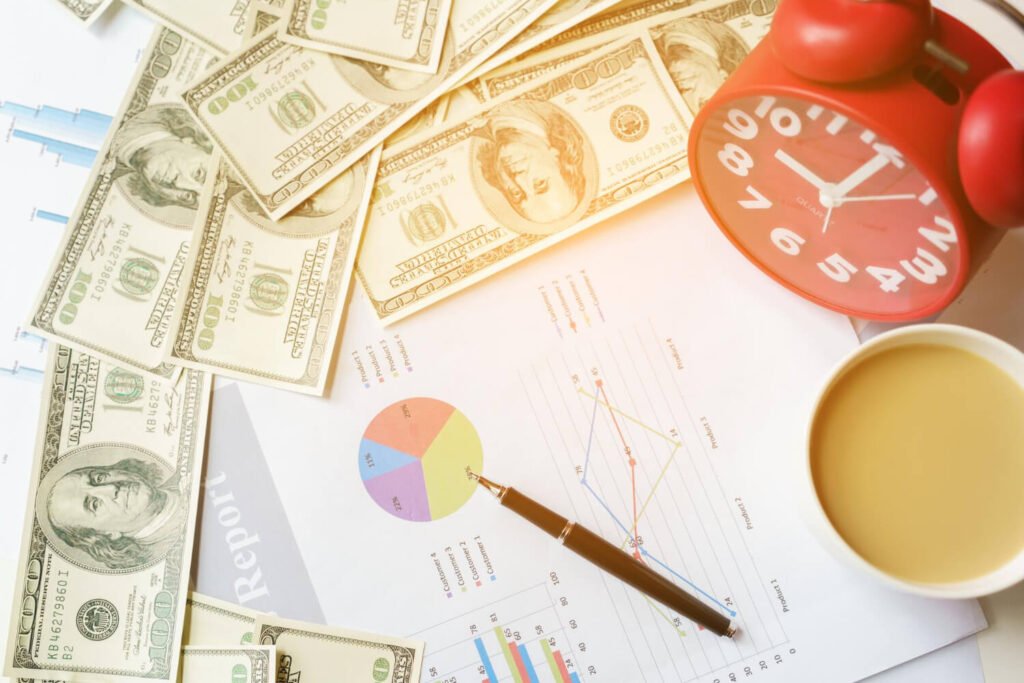Do you ever wonder when Amazon pays its sellers? It can be a bit of a mystery, especially if you’re not used to dealing with large corporations. In this blog post, we’ll give you a timeline of when Amazon typically pays its sellers, Does Amazon Pay Weekly Or Biweekly? as well as some tips on how to get your money as quickly as possible. Thanks for reading!
Also Read:
- Do Amazon Employees Get A Discount? [All Benefits Explained]
- How To Use American Express Gift Card On Amazon?
Does Amazon Pay Weekly Or Biweekly?
As a general rule, Amazon pays its sellers every week, typically on Friday. However, there are a few things that can affect when you actually receive your payment. For example, if you’re selling digital products (like e-books or software), you’ll usually be paid within two days of the sale. If you’re selling physical goods, you’ll usually be paid within seven days of the product being shipped. And if you’re using Amazon Fulfillment to store and ship your products, you may have different payment terms.
There are a few other things that can affect when you get paid, but as a general rule, you can expect to receive your payment on Friday if everything goes smoothly. Of course, there are always exceptions to the rule, so it’s always best to check with Amazon directly if you have any questions about when you’ll be paid.

If you need your money sooner than Amazon’s typical payment schedule, there are a few things you can do. First, you can sign up for Amazon’s Accelerated Payment Program, which allows you to receive your payments within two days of making a sale. You’ll need to have a good sales history and meet other eligibility requirements to qualify for this program.
Another option is to use an Amazon-approved third-party service like Payoneer or TransferWise. These services will typically allow you to receive your payments within one to two days, although there may be fees involved.
So, that’s the lowdown on when Amazon pays its sellers. As you can see, it’s usually pretty quick and easy to get your money, but there are a few things that can affect the timeline.
Does Amazon Pay The First Week?
Unfortunately, Amazon does not currently offer a payout for first-week earnings. This policy may change in the future, but for now, you’ll have to wait until your second week as an Amazon worker before you can receive payment.
When you do receive payment, it will be for all of the work that you completed in the previous week (Tuesday-Monday). So, if you completed a HIT on Tuesday and another on Wednesday, you would not get paid for those until the following week. Amazon pays workers every Friday via direct deposit, so long as you have earned at least $1.00 during the week.
While $1.00 is the minimum amount that must be earned to get paid, there is no limit to how much money you can make per week. The amount you earn will depend on the types of HITs you complete and how quickly you complete them. Some workers report earning several hundred dollars per week, while others make only a few dollars.
Whether you’re looking to supplement your income or earn a full-time wage, Amazon can be a great way to do it.
What Does A Positive Account Balance Mean On Amazon?
If you’ve been selling on Amazon for any length of time, you’ve probably noticed that your account balance can fluctuate quite a bit. You might be wondering, then, what a positive account balance means.
A positive account balance on Amazon simply means that you have money owed to you by Amazon. This can happen for a number of reasons, but the most common one is that you have pending sales that have not yet been processed.
For example, let’s say you sold an item on Monday and the buyer pays for it using an eCheck. The eCheck will usually take 3-5 days to clear, which means Amazon won’t receive the funds until sometime next week. In the meantime, though, your account will show a positive balance for the sale.
Once the eCheck clears and Amazon receives the funds, your account balance will go back to zero. If you have any other pending sales, though, your account balance will remain positive until those sales are processed.
When Can Amazon Hold Your Payments As A Seller?
As an Amazon seller, you’re probably used to getting paid pretty quickly. After all, Amazon pays its workers every Friday via direct deposit, so you would expect the same for sellers, right?
Wrong.
Unfortunately, Amazon does not always pay sellers as quickly as it pays its workers. There are a few situations in which Amazon can hold your payments for up to two weeks or more.
The most common reason for delayed payments is that Amazon is holding the money to pay any fees or taxes that may be owed. For example, if you sell an item for $100 and Amazon charges a 10% commission, you will owe them $10. If you also have a $1 shipping fee, your total fee would be $11. In this case, Amazon would likely hold the entire $100 payment until those fees are paid.
Another reason why Amazon may hold your payments is if there are concerns about the customer’s payment method. For instance, if a customer pays with a credit card that later turns out to be stolen, Amazon will refund the customer’s money and they will not pay the seller. In this case, Amazon will likely put a hold on all payments from that customer until the issue is resolved.
Finally, Amazon may also hold your payments if there are concerns about the quality of your products or if you have a high return rate. In these cases, Amazon may want to make sure that they have enough money on hand to cover any refunds that may be issued.
If you’re selling on Amazon, it’s important to be aware of the fact that your payments may not always come as quickly as you expect them to. Be sure to factor in any possible delays when budgeting for your business.
How Can You Make Sure That The Payments Come In Smoothly As A Seller On Amazon?
The best way to make sure that your payments come in smoothly is to avoid any situations that may cause delays. As we mentioned above, the most common reasons for delayed payments are concerns about fees, customer payment methods, and product quality.
To avoid issues with fees, be sure to keep track of all of the expenses associated with your sales. This includes things like shipping costs, commissions, and taxes. By keeping a close eye on your expenses, you can be sure that you’re always paying what you owe.
To avoid issues with customer payment methods, only accept payments from customers who have a good history with Amazon. If you’re not sure whether or not a customer is trustworthy, err on the side of caution and don’t accept their payment.
Finally, to avoid issues with product quality, be sure to only sell high-quality items. If you’re selling used items, be sure to describe them accurately and take plenty of pictures. By being upfront about the condition of your products, you can avoid any misunderstandings or disappointed customers.
By following these tips, you can help ensure that your payments come in smoothly and on time.
Also Read: What Does Repackaged Mean On Amazon? [All You Need To Know]
What Can You Do If Your Payments Are Not Showing In Your bank Account?
If your payments are not showing in your bank account, the first thing you should do is check the status of your payments in your Amazon account. To do this, log in to your account and go to the “Orders” page. From there, click on the “Payments” tab.
This will show you a list of all of the payments that have been made to your account. If the payment you’re looking for is not listed, it may still be processing. In this case, you should wait a few days and check again.
If the payment is listed as “Pending,” it means that Amazon has processed the payment but it has not yet been sent to your bank. This usually happens because Amazon is waiting for the funds to clear. In most cases, the funds will clear within a few days and the payment will be sent to your bank.
If the payment is listed as “Completed,” it means that the payment has been sent to your bank and should be in your account. If you don’t see the payment in your account after a few days, contact your bank to find out why.


